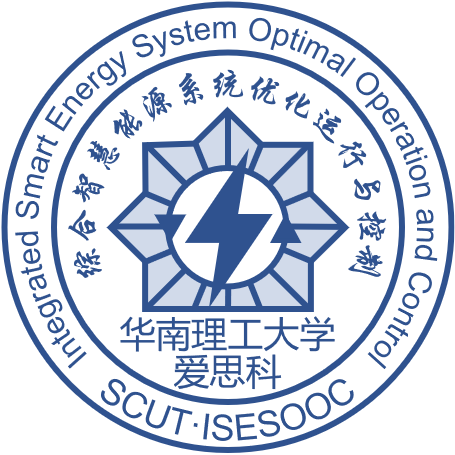
Host

South China University of Technology, China
Introduction:
The South China University of Technology (SCUT) is a leading educational institution in China. It is a public research-intensive university directly governed by the Chinese Ministry of Education. Located in the city of Guangzhou, a thriving metropolis in South China, the university today covers a total area of 391 hectares, consisting of three campuses: the Wushan Campus, the University Town Campus, and the Guangzhou International Campus. The university was formerly known as the South China Institute of Technology, which was first founded in 1952 by merging the engineering schools and departments of several major universities and polytechnic institutes from five provinces, including Guangdong, Guangxi, Hunan, Hubei and Jiangxi. The reorganization, at the time, brought engineering faculties with the strongest academic strengths in the central and southern China together in Guangzhou. The predecessors of this new institute shared long histories of developing modern higher education and scientific research, especially in training students of engineering and technology. The outstanding tradition dates back to the early 20th century, when modern democracy and science were emerging and developing quickly in Guangdong province. In 1960, eight years after the institute's establishment, it was selected by the state as a National Key University. In 1981, it was authorized by the State Council as one of the first institutions in the country to confer doctoral degrees and master degrees. In 1988, the South China Institute of Technology was renamed the South China University of Technology. In 1995, SCUT was listed in China's "Project 211", a national endeavor aiming at strengthening top institutions of higher learning as a priority for the 21st century. In 2001, SCUT was listed in "Project 985", which at the time was the country's most significant educational project for funding world-class universities. Then in 2017, it was chosen into China’s "Double World Class" project as a Category-A University. After over 60 years of development, SCUT has become a multi-disciplinary university, merging science, engineering, business management, arts and social science, medicine and other disciplines into one integration. Since its founding, it has educated over 380,000 graduates at all levels. Large numbers of SCUT alumni have made key contributions to the country and the world, especially in economy, technology, and education. In 2016, SCUT was ranked the world's top 300 universities by the Academic Ranking of World Universities, with its engineering placed at the 22nd place. According to Clarivate Analytics's Essential Science Indicators, SCUT has 10 subject areas ranked within the global top 1%, including chemistry; materials science; engineering; agricultural science; physics, biology and biochemistry; computer science; environment and ecology; clinical medicine; and social sciences, general. Being determined to take a more active and efficient role in the global education, SCUT has established connections and partnerships with over 200 overseas universities and research institutions to promote student training and scientific research. There are international students from more than 100 countries studying in SCUT's campuses. Most of them are taking courses in Chinese language and culture, natural science, engineering, and business management. Entering a new stage of history, our faculty will continue to see student cultivation as the ultimate goal in our agenda. SCUT will always hold onto the belief that takes "the academy as the foundation, talented ones as the strength, open minds as the vitality, and the culture of the university as the energy to thrive and last". All these efforts are building SCUT as a top-ranking university in the country and a renowned world-class institution.
Technically Co-sponsor

IEEE, IEEE Guangzhou Section
Supporter
IEEE PES SBLCS-China
Introduction:
The Smart Buildings–Loads–Customer Systems Technical Committee is an IEEE Power & Energy Society (PES) entity that works to develop knowledge base and standards in the fast-growing area of consumer and prosumer energy services and systems behind the meter. We also seek to refine the processes and business models that expand and clarify the relationship between the grid and emerging distributed energy resources.

Integrated Smart Energy System Optimal Operation and Control, South China University of Technology, China
Introduction:
The Integrated Smart Energy System Optimal Operation and Control, South China University of Technology, China (SCUT-ISESOOC) was established in 2019. Professor Zhu Jizhong, the head of theSCUT-ISESOOC, is a foreign academician of the Italian Academy of Sciences of Bologna, a national overseas high-level introduced talent, a Fellow of IEEE, a Fellow of IET, a Fellow of the Chinese Society of Electrical Engineering, a Fellow of the Asia-Pacific Society of Artificial Intelligence, a Guangzhou innovation leader and a Guangzhou high-level outstanding talent, and has been selected as a member of the Lifetime Achievement List of the Global Top 2% of Scientists. There are two outstanding young faculty members and three post-doctoral fellows, 8 PhD students and 26 master's degree students in IISI. The Center is mainly engaged in the coordinated operation of integrated energy systems, smart grid and optimal scheduling of new power systems, power and multi-energy market system architecture and trading mechanism, application of artificial intelligence in power systems, power and integrated energy information physical and social systems, vehicle-network interaction, and optimal operation and control of distribution and micro-grids, and other research work. AISI Research Center has undertaken more than 20 projects including National Key Research and Development, National Natural Science Foundation of China and other national, provincial and ministerial level projects, and has authorized more than 30 Chinese patents and 1 US patent, published 4 English monographs and 2 Chinese monographs, and published more than 400 papers in famous international journals and academic conferences. His research achievements have been honored with a number of provincial and ministerial awards, including one first prize of Natural Science Award of the Ministry of Education, one special prize and one third prize of Science and Technology Progress of China Southern Power Grid, and one first prize of Science and Technology Progress of the Research Institute of Science and Technology of Southern Power Grid.
